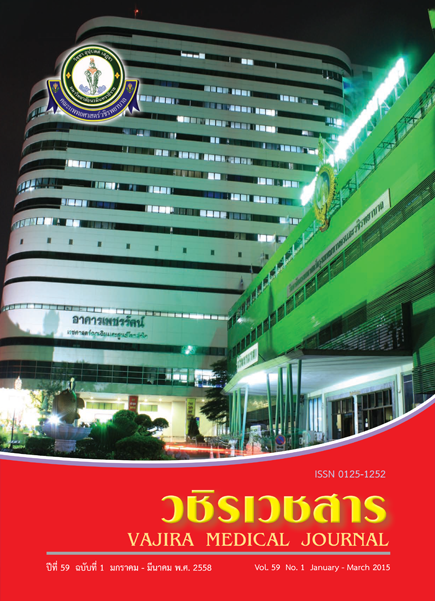Leadership in Medical Service Management and Health Development Strategy to Improve the Quality of Life in Urban Population: A Case study of the Center of Excellence BMA, 2011
Main Article Content
Abstract
Objectives: To study leadership in medical service management and a health development strategy to improve the quality of life in urban population: a case study of The BMA Center for Medical Excellence 2011 and also propose a leadership model in medical service management which is appropriate for use in the future.
Methodology: This research study is a mixed methodology which consists of a qualitative research, a quantitative research and a documentary research. The data was collected by an in-depth interview of 43 interviewees in different fields such as executive leaders, representatives of experts/scholars, national politicians, executives from the private organizations, executives from Bangkok Metropolitan Administration, executives from public organizations/state owned enterprises, leader representatives from different parts of religion, mass media, and people. The data from qualitative study was taken to create a metrics-oriented model for a further survey research. Sample groups of 415 medical staff of Bangkok Metropolitan Administration’s division were randomly stratified for sampling between July 2010 and June 2011.
Results: The findings show overall images from past, present and he future of both an executive leadership for medical service management and strategy for health improvement for quality of life in urban population of The Center for Medical Excellence in Bangkok Metropolitan Administration. The result of this study is qualitative and quantitative analysis from “The Mediocre Healthcare Builders” to “The Shangrila Prime Movers” model. The executive leaders for medical service management in the future are often strategic leaders who have a vision and focus on creating shared value. They have a conceptual thinking for the city of health, emphasize on holistic healthcare, support scholar’s work and standard quality assurance, networking, and good governance. They create not only the Inspiration to improve quality of life but also a learning and Living organization. They are the leaders of various quality awards ceremony. They strengthen services system access. They are professional people who focus on achievement, support research and development, work and also create new innovations. They develop with information and technology to assist their working system. They concentrate on an international standard and being a model of excellent management for sustainable development. Furthermore, the finding of this study shows that the leadership model in medical service management consists of three groups of leaders, which are the global leaders, the national leaders and the organizational leaders. The study of the relationship between the variables find that a personal variable such as age, educational levels, administrative positions, work experiences, administrative experiences in an organization/hospital relates with a medical management. The factors about working experiences relates to the health development strategy with a statistical significance level at 0.01. Likewise, the relation between medical administration leadership and the health development strategy is at a high level (Pearson Correlation = 0.782), the relation between medical administration leadership and the better quality of life in urban population is at a moderate level (Pearson Correlation = 0.625) and the relation between health development strategy and the better quality of life in urban population for Bangkok Center for Medical Excellence is at a high level (Pearson Correlation = 0.761).
Conclusion: The leadership model, medical service management in accordance with health development strategy for a better quality of life in urban population of the Center for Medical Excellence, is “The Mediocre Healthcare Builders” to “The Shangrila Prime Movers”. In the future, an adjustment bases on this leadership model will be beneficial for urban people who get a better quality of life, and receive medical services at Bangkok Center for Medical Excellence.


